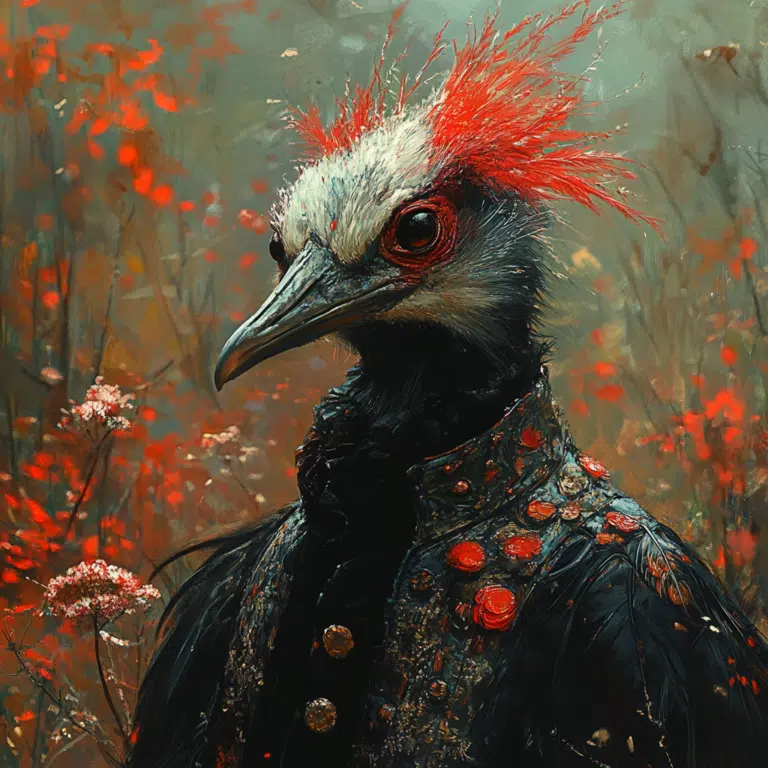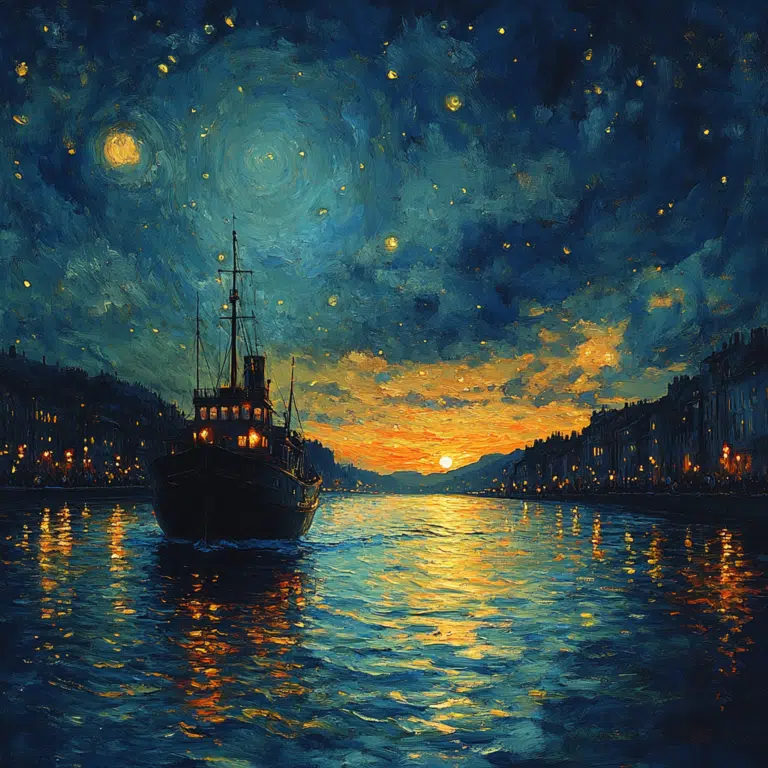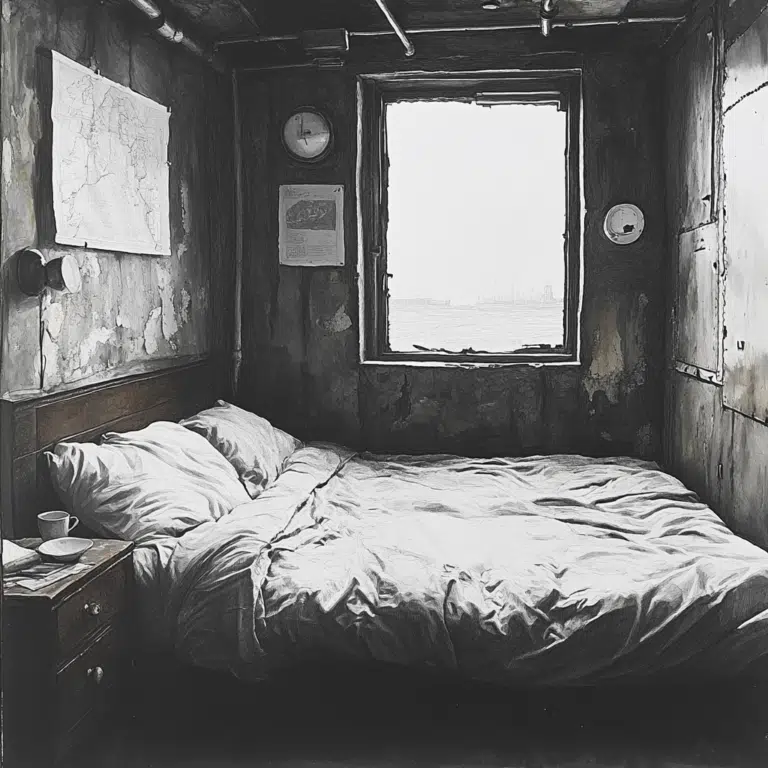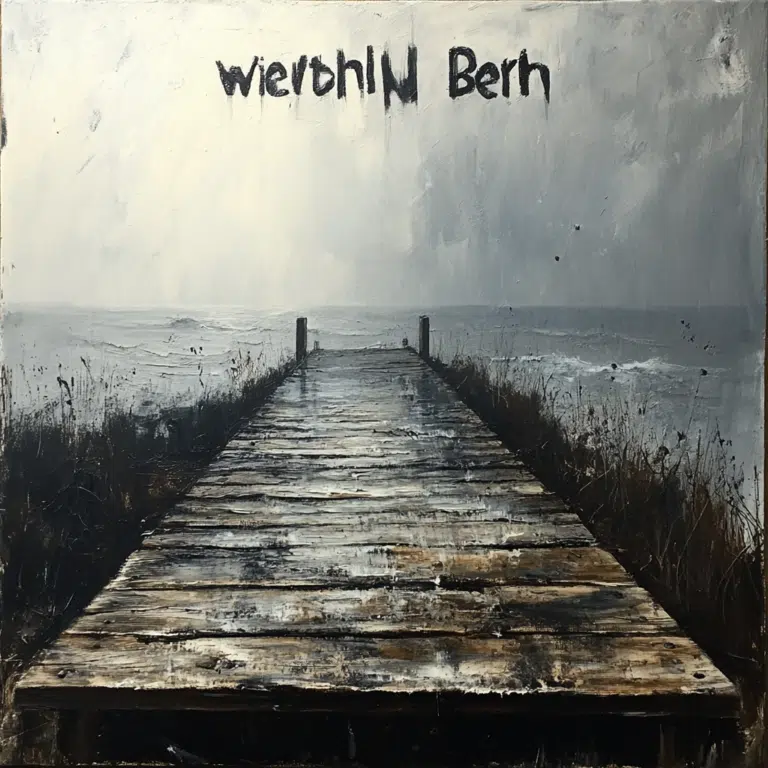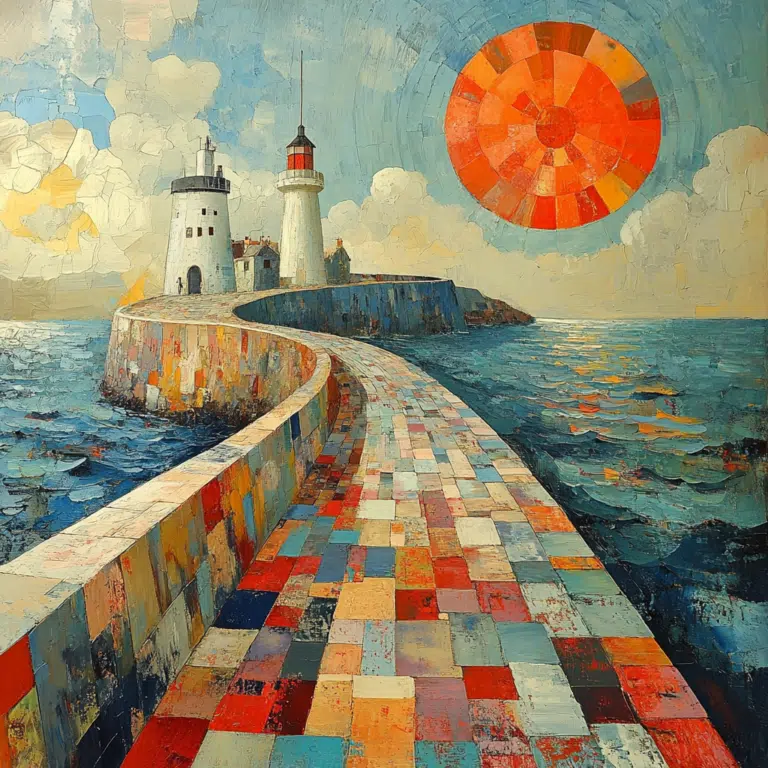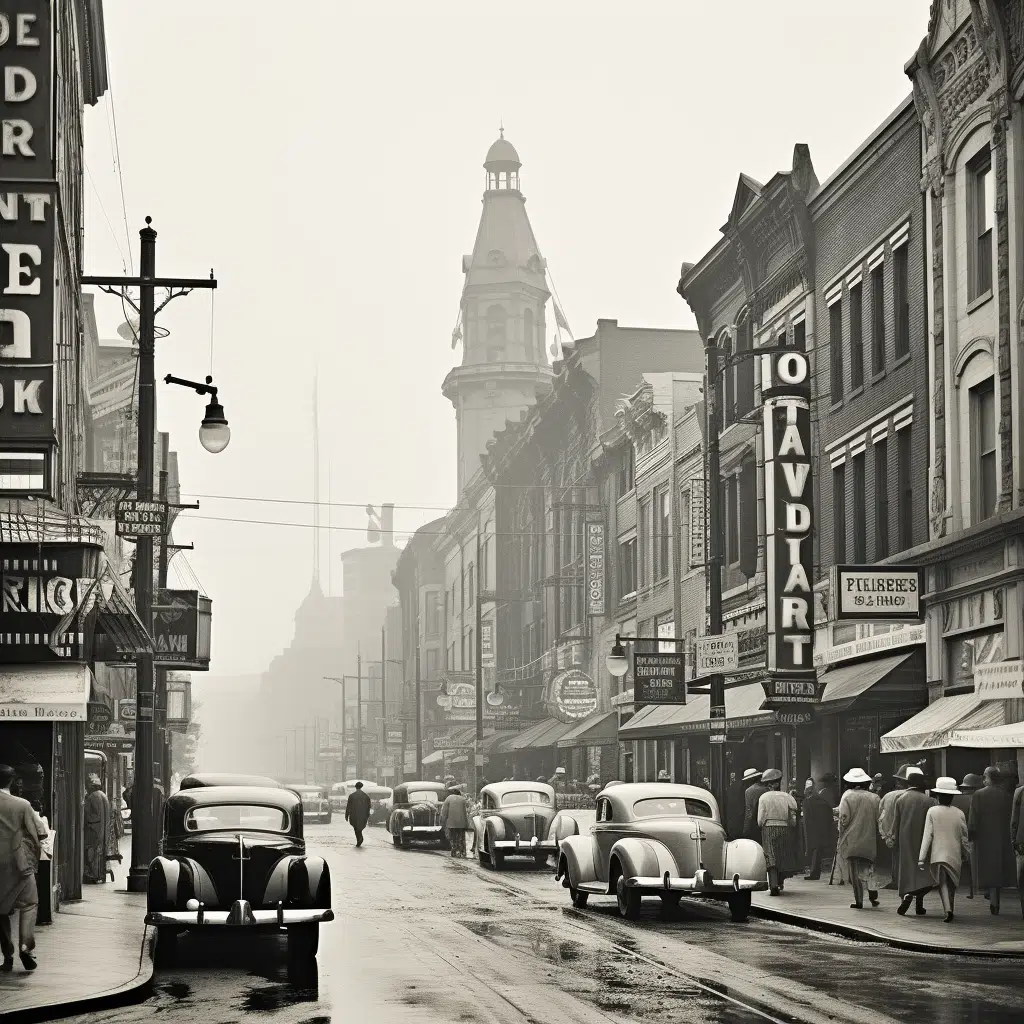The Artist’s Garden at Giverny: A Historical Overview
Monet’s Acquisition and Vision
In 1883, Claude Monet, the great impressionist painter, purchased a property in Giverny, driven by his passion for nature and gardening. By buying the estate, Monet was set to transform the land into a living canvas. He meticulously planned each aspect of the garden, with every flower, tree, and pathway contributing to a harmonious composition. His vision wasn’t about gardening alone; it was about creating a space that could inspire and intertwine with his art. This wasn’t just aesthetics—it was his lifework, mirroring his exquisite use of light and color.
Restoration Efforts
Following Monet’s death in 1926, the Artist’s Garden fell into disrepair. It lay neglected until 1977, when the Fondation Claude Monet spearheaded a restoration project. This was no small feat. Historians, horticulturists, and art conservationists came together to revive Monet’s vision. They ensured that the breathtaking colors and intricate designs stayed true to Monet’s original intent. Today’s garden is a tribute to meticulous efforts to preserve this historical masterpiece.
The Layout and Design of the Artist’s Garden at Giverny: Monet’s Innovative Approach
The Clos Normand
Right in front of Monet’s house lies the Clos Normand, an explosion of color and life. This garden features a stunning array of flowers such as nasturtiums, tulips, pansies, and irises. Organized into lush, color-coordinated sections, it’s a three-dimensional representation of Monet’s impressionistic techniques. Imagine strolling through rows of blooms that seamlessly transition in colors, each path reflecting the hues and shades Monet favored in his paintings.
The Water Garden
Monet’s water garden is perhaps even more iconic. Inspired by Japanese art and culture, this section features a serene lily pond, the famed Japanese bridge, and weeping willows. Here, Monet found the calm and tranquility that inspired his renowned “Water Lilies” series. The water garden captures the delicate interplay of light and reflection, so central to his work. The tranquillity and timeless beauty of this part of the garden have made it a cornerstone of Monet’s legacy.
| Aspect | Details |
| Artist | Claude Monet |
| Year | Estimated around early 1900s |
| Location Depicted | Monet’s garden in Giverny, France |
| Painting Style | Impressionism |
| Description | Rows of irises in purple and pink under dappled light with a glimpse of Monet’s house in the background. |
| Historical Context | Little to none |
| Intended Meaning | Depiction of peace and tranquility |
| Key Flowers Depicted | Irises, tulips, pansies, doronicum, aubrietas, forget-me-nots, crocus, and viola cornuta |
| Arrangement | Large groups of one color, enhancing visual harmony during bloom periods |
| Original Artwork | No original Monet paintings are housed in Giverny |
| Copies | Many poor oil painting copies displayed at the Monet family home |
| Viewing Experience | Important for Monet enthusiasts despite the absence of original artworks |
The Influence of the Artist’s Garden at Giverny on Monet’s Art
Revolutionizing the Impressionist Movement
Monet’s garden wasn’t just a place of relaxation; it was a vital subject of his artwork. The way he painted light, shadow, and reflection articulated his innovative use of color. Pieces like “The Artist’s Garden at Giverny” and “The Pathway in Monet’s Garden at Giverny” are seminal works that defined the impressionist movement. By focusing on capturing the essence of each season, Monet paved new ways for understanding and appreciating nature in art.
Artistic Techniques and Innovation
Monet often used plein-air (outdoor) painting techniques to capture the fleeting effects of natural light. He would paint the same scene at different times of the day, creating series that documented these transient moments. This experimental approach allowed him to push the boundaries of traditional art and innovate with color and light. His work at Giverny is a testament to his relentless pursuit of capturing life’s ever-changing beauty.
The Artist’s Garden at Giverny: A Source of Continued Inspiration
Contemporary Artists and Art Lovers
The influence of the Artist’s Garden at Giverny extends far beyond Monet’s lifetime. Contemporary artists such as David Hockney and Ai Weiwei have drawn inspiration from Monet’s approach to nature and light. Exhibitions at institutions like the Museum of Modern Art in New York continue to honor Monet’s work, juxtaposing his masterpieces with contemporary interpretations. Monet’s impact on modern art remains profound.
Educational Programs and Workshops
The Fondation Claude Monet offers a variety of workshops and educational programs. Participants can immerse themselves in the gardening techniques and artistic practices that Monet employed. For art lovers keen to understand the intersection between nature and art, these initiatives provide a profound, hands-on experience in an environment rich with history and creativity.
Visiting the Artist’s Garden at Giverny: Practical Information and Tips
Best Times to Visit
The Artist’s Garden is a year-round beauty, but spring and summer bring out its true splendor. Between April and October, especially in May and June, the garden is in full bloom. Expect to see vivid rows of tulips, irises, pansies, and doronicum, alongside lesser-known flowers like aubrietas and forget-me-nots.
Guided Tours and Experiences
To truly appreciate the garden’s history and artistic significance, consider taking a guided tour. These tours offer deeper insights into Monet’s life, his artistic techniques, and the meticulous care involved in maintaining the garden. Some tours even offer exclusive access to restricted sections or insights into ongoing conservation efforts, providing a richer, behind-the-scenes experience.
Preserving the Legacy of the Artist’s Garden at Giverny for Future Generations
Sustainable Gardening Practices
In recent years, the garden’s caretakers have adopted eco-friendly practices to ensure its sustainability. By embracing organic farming, water recycling, and biodiversity conservation, they are preserving Monet’s legacy in an environmentally conscious way. It’s a continuous effort to balance historical fidelity with modern ecological responsibility.
Community Engagement and Support
Support from local and international communities has been vital in maintaining the garden. Initiatives like the “Friends of Giverny” program allow enthusiasts to contribute to its upkeep and educational outreach. This ensures that Monet’s garden remains a vibrant cultural landmark that continues to inspire future generations.
Engaging with the Artist’s Garden at Giverny is more than just a visit; it’s a journey through Monet’s world. Visitors traverse his brushstrokes, experience his passion for light and color, and join in a legacy of appreciation that has endured for over a century. It promises to keep inspiring visionaries for many generations to come.
For more on historic artistic inspirations, check out how Thunderheart reverberates with cultural authenticity or delve into the past with the engaging stories behind The House bunny cast. Also, keep up with the top Nfl free Agents 2024 and uncover the enigma behind Jack Posobeic twitter for a mix of the artistic and everyday pulse.
Baltimore Examiner — Your Source for News and Culture
The Artists Garden at Giverny: Monet’s Floral Masterpiece
Ever wondered why Claude Monet’s garden in Giverny captivates millions? Hold onto your hats, as we dive into the enchanting world of “The Artists Garden at Giverny”.
A Labor of Love
Monet was no stranger to hard work. When he purchased the Giverny property, he put his heart and soul into transforming a barren plot into a floral wonderland. Obsessed with every detail, he handpicked each plant and laid out his dream garden. Interestingly, this process isn’t much different from buying Homes That are Foreclosed and requires a relentless pursuit of one’s vision. Monet turned his passion into a living canvas, creating scenes that later blossomed on his canvases.
The Garden’s Residents
You might be curious about the garden’s long-time residents meaning the vibrant flowers and diverse flora. From the delicate water lilies that danced on the surface of his pond to the vibrant clusters of irises and roses, every plant played its part in Monet’s symphony of colors. This intricate ecosystem provided endless inspiration for his series of paintings that still mesmerize art lovers today.
An Oasis of Tranquility
Monet’s garden truly is an oasis. Set amidst the hustle and bustle of life, it’s a serene retreat, much like the calm after coming through a stormy health phase. For instance, understanding How long Does Mdma stay in Your system emphasizes the need for places of peaceful recuperation. Monet’s garden offered him exactly that—a serene environment for reflection and creation.
Every corner of the Gardens at Giverny tells a story of Monet’s love affair with nature, blending artistry with horticulture. Before you visit, take a moment to cherish that this garden stands as both a masterpiece and a testament to Monet’s unwavering spirit.
What is the message of the artist’s garden at Giverny?
The Artist’s Garden at Giverny doesn’t carry much historical context or a formal message from Monet. However, the way the flowers are arranged and the peaceful scenes can suggest that Monet wanted to show tranquility and calmness during that period.
What are the characteristics of the artist’s garden at Giverny?
The garden features rows of irises in shades of purple and pink, positioned diagonally. The irises are beneath trees that let dappled light through, which changes the colors’ tones. You can also catch a glimpse of Monet’s house beyond the trees.
What flowers are in the artist’s garden at Giverny?
Tulips, pansies, iris, and doronicum are among the main plants grown in Monet’s garden. Alongside them, you’ll find Aubrietas, Forget-me-nots, Crocus, and Viola cornuta. Monet loved to paint large groups of one color that truly stand out when they’re in full bloom.
Are the paintings at Giverny real?
No, there are no original Monet paintings at the family home or anywhere in Giverny. The Monet family home displays several poor oil painting copies instead.
What is special about Giverny?
Giverny is special because it was Claude Monet’s home and inspiration for many of his famous works. The garden he created there became a living painting and remains a beautiful and peaceful spot for visitors.
Why did Claude Monet paint his garden?
Monet painted his garden because it was his personal sanctuary and muse. He found endless inspiration in the flowers, trees, and changing light. It allowed him to explore colors and impressions right at his doorstep.
How long did Monet live at Giverny?
Monet lived at Giverny for over 40 years, from 1883 until his death in 1926. During this time, he cultivated his garden and created many of his beloved masterpieces.
What are 5 interesting facts about Claude Monet?
Claude Monet was a founder of French Impressionist painting. He loved outdoor scenes, especially his garden in Giverny. He lived there for over four decades. Monet’s eyesight failed late in life, yet he continued to paint. He was passionate about showing different light and weather in his work.
What is the meaning of irises in Monet’s garden?
Irises in Monet’s garden can symbolize faith, hope, and wisdom. However, Monet didn’t assign formal meanings to the flowers. He likely enjoyed their vibrant colors and how they captured light.
What was Monet’s favorite plant?
Monet’s favorite plant seemed to be the water lily. His series of water lilies paintings are among his most famous works, and they were inspired by the water garden he designed at Giverny.
What are the colors of the artist’s garden at Giverny?
The garden bursts with colors, especially purples, pinks, greens, and the soft dappled light. The flowers’ vibrant hues provide a stunning contrast against the green foliage and blue skies.
What happened to Monet’s garden?
Monet’s garden at Giverny has been meticulously restored. It is carefully maintained to look much like it did during Monet’s time, attracting numerous visitors.
Who is buried in Giverny?
Claude Monet is buried in Giverny, in the local cemetery of the village church. His final resting place is near his much-loved garden.
Can you stay in Monet’s house?
No, you can’t stay in Monet’s house. It’s preserved as a museum for visitors to explore and learn about the artist’s life and work.
Where did Monet buy his water lilies?
Monet bought his water lilies from plant nurseries, including those in France and possibly even importing some from Japan. They became a central feature in his water garden and his famous paintings.
What is the message of the poem the garden?
The poem “The Garden” often explores themes of peace, reflection, and connection to nature. It celebrates the garden as a place of solace away from the chaos of daily life. This can be similar to the tranquility Monet sought in Giverny.
What is the message of Claude Monet’s painting?
Claude Monet’s paintings often convey the beauty of nature, the play of light, and moments of fleeting impressions. He aimed to capture the world as he saw it in different lighting and weather conditions.
What is the message of the song in the garden?
The song “In the Garden” generally talks about a personal and peaceful encounter, often with a spiritual or contemplative tone. It emphasizes a close, tranquil moment spent in a garden setting.
What is the message of the artwork The Garden of Love?
The artwork “The Garden of Love” by Peter Paul Rubens usually symbolizes the joy and idyllic nature of love and harmony among people. It’s a vibrant, lively depiction of happiness and togetherness.















